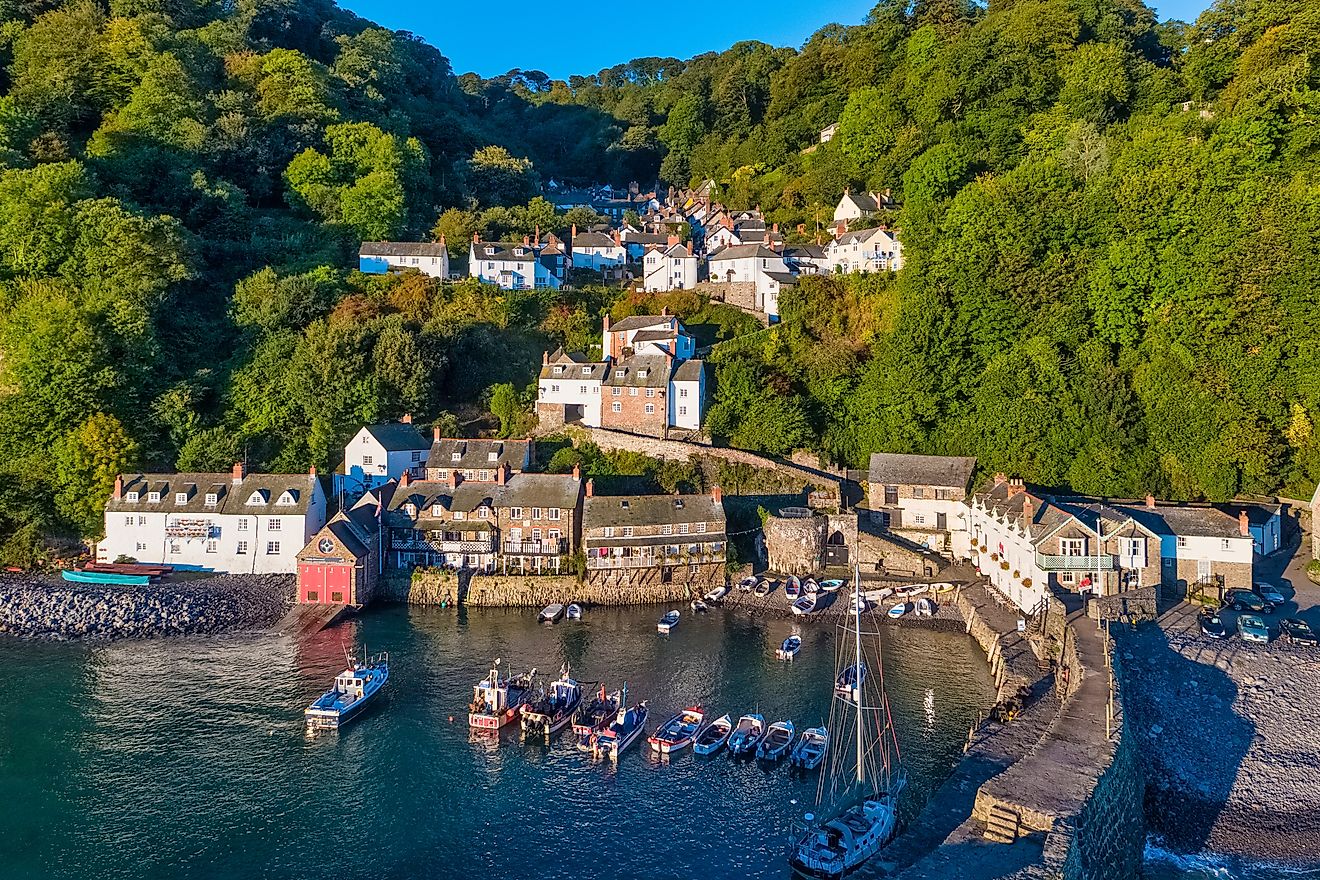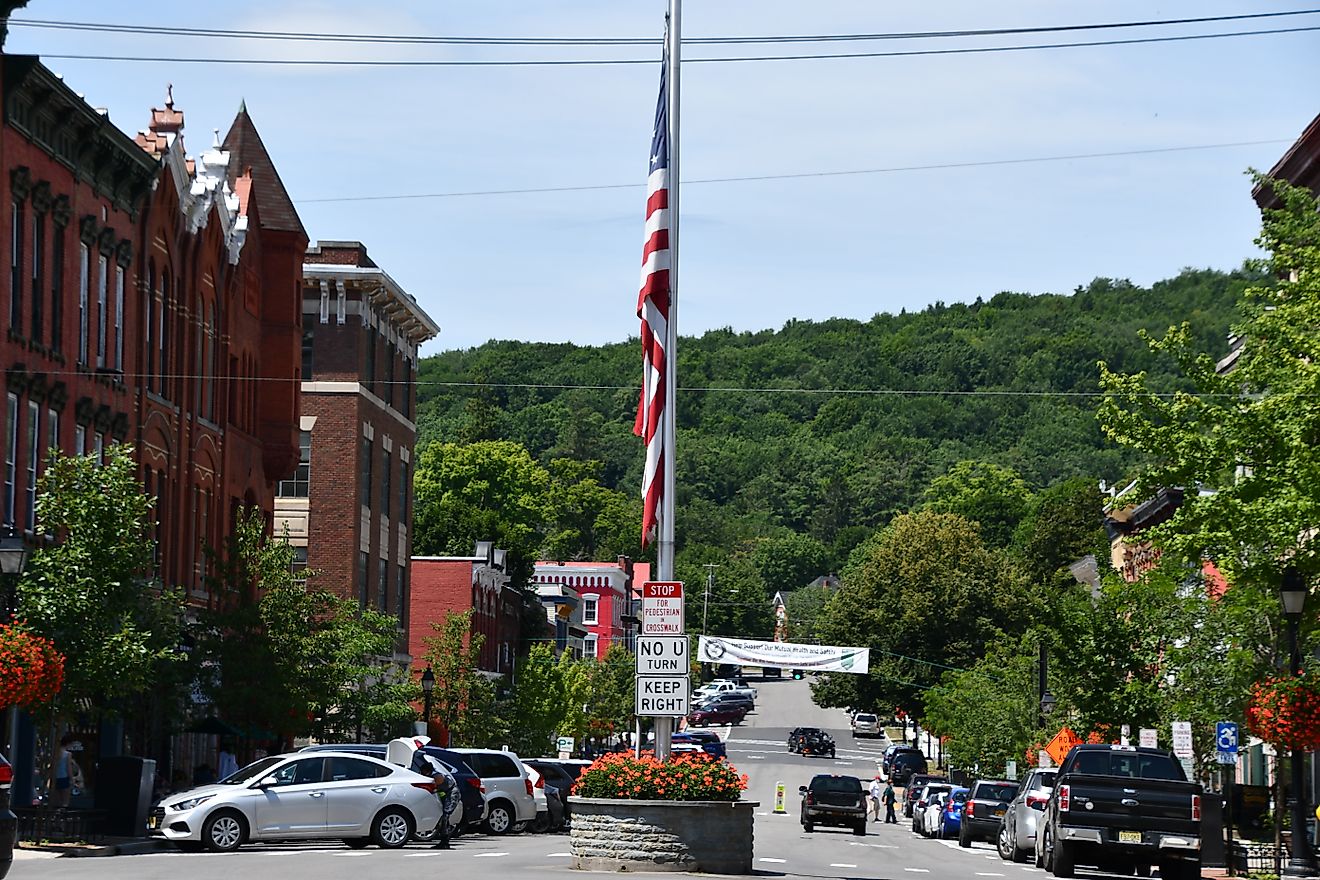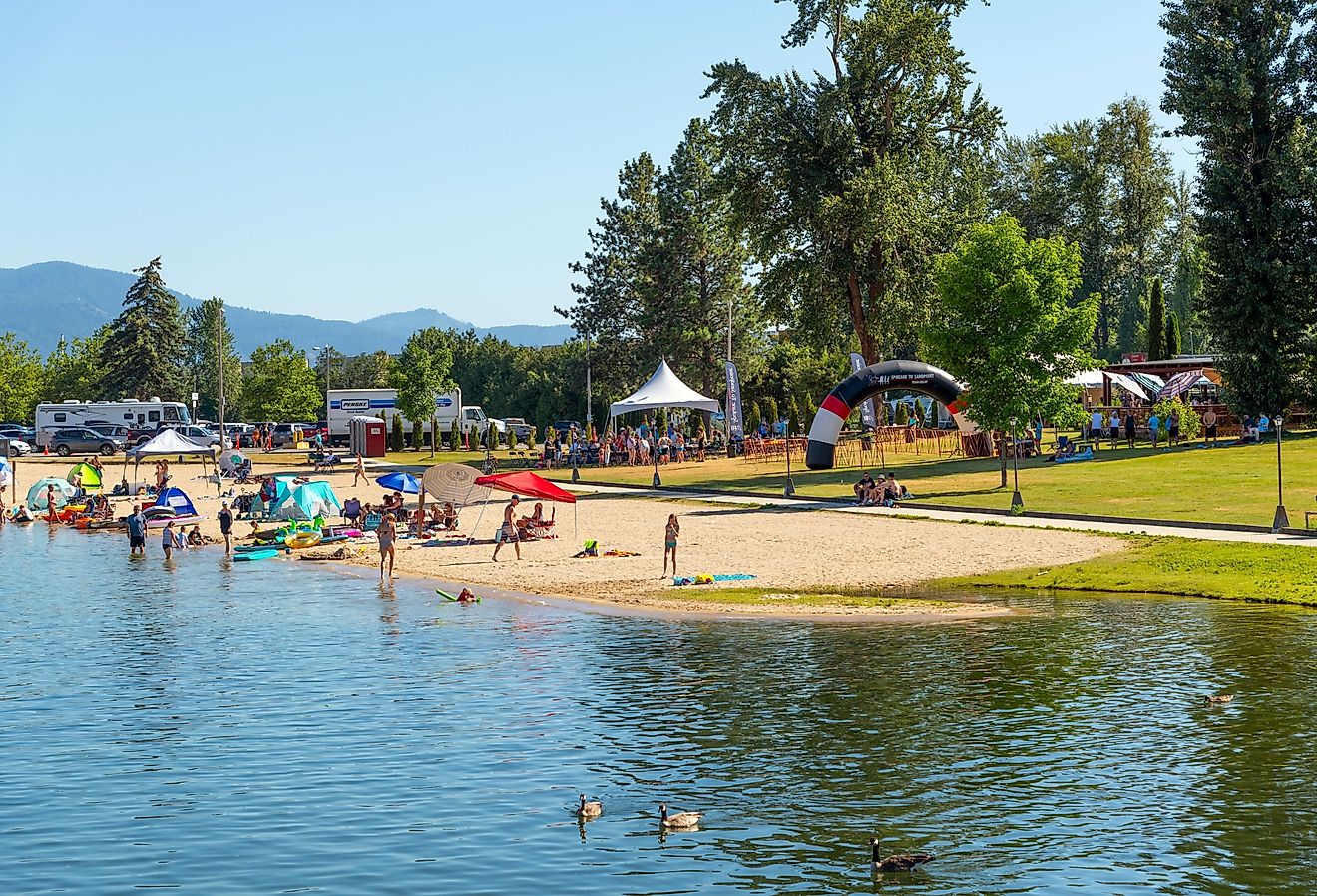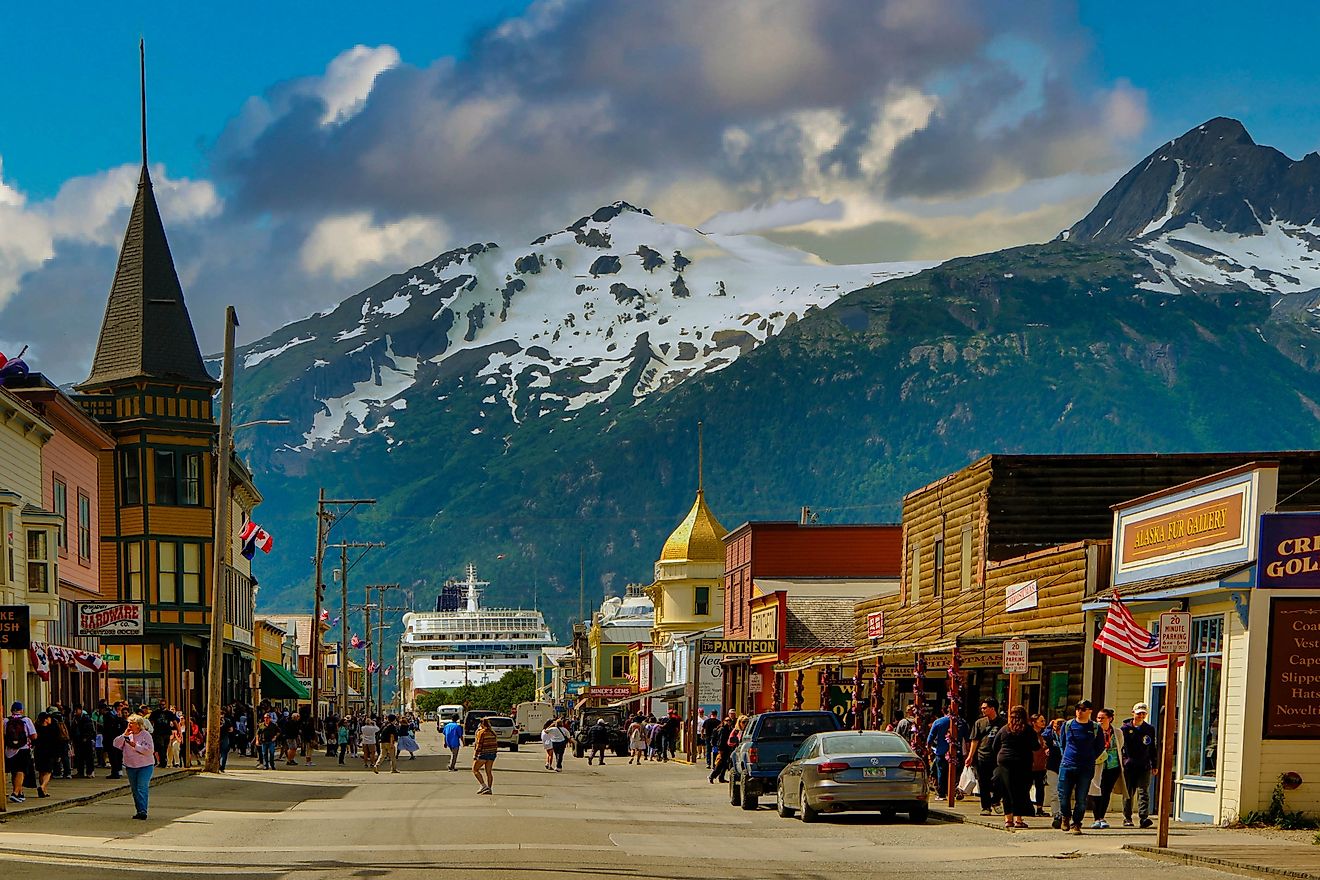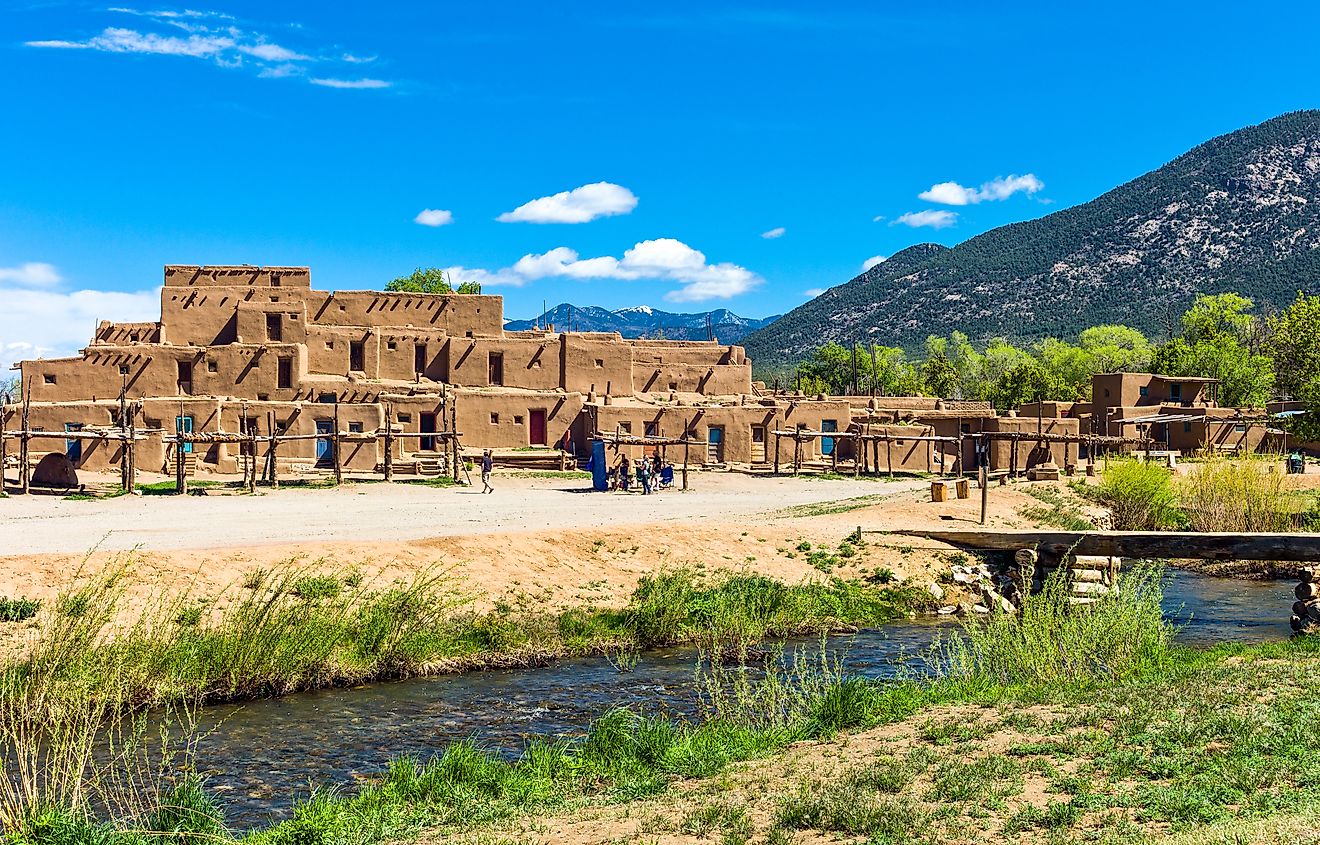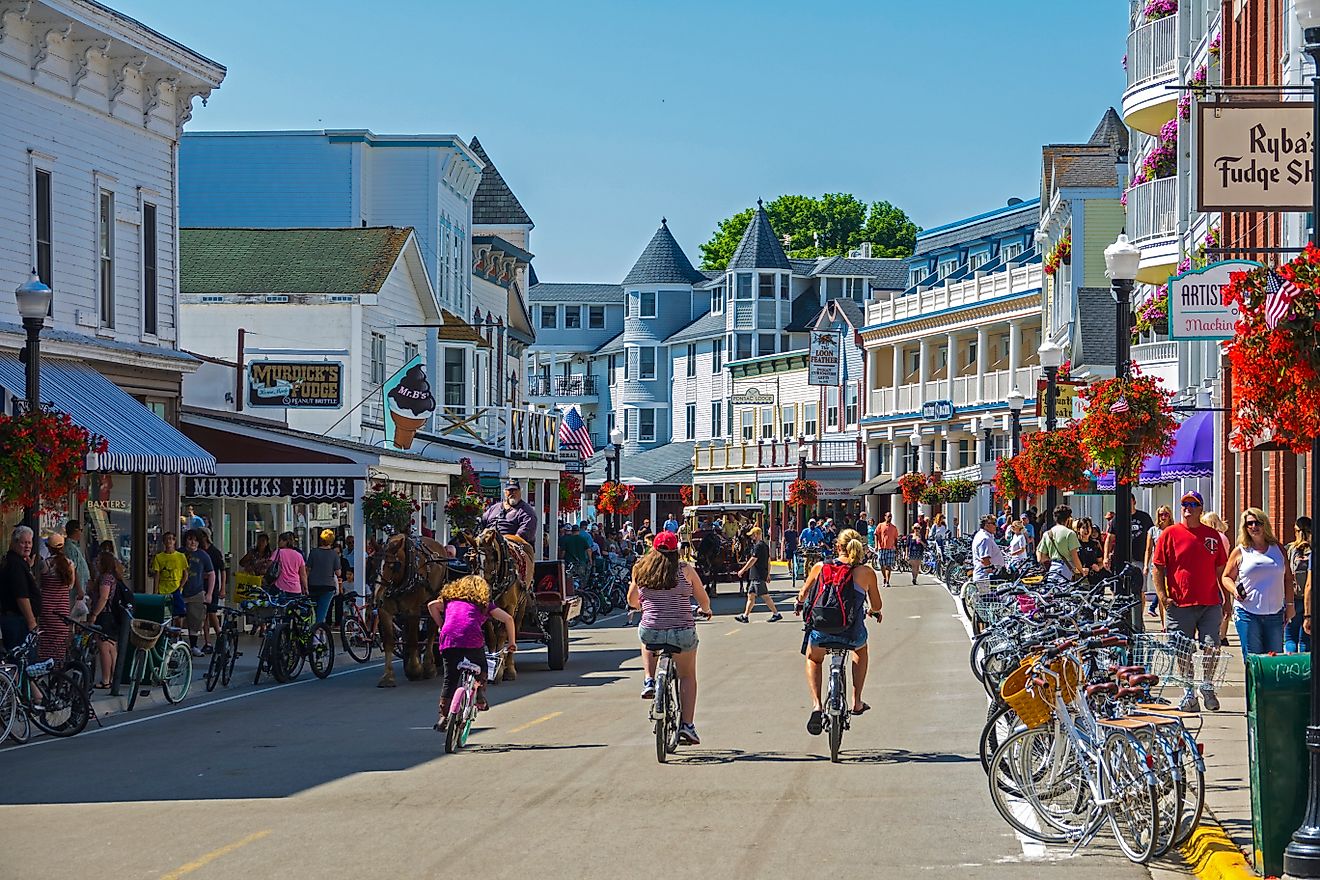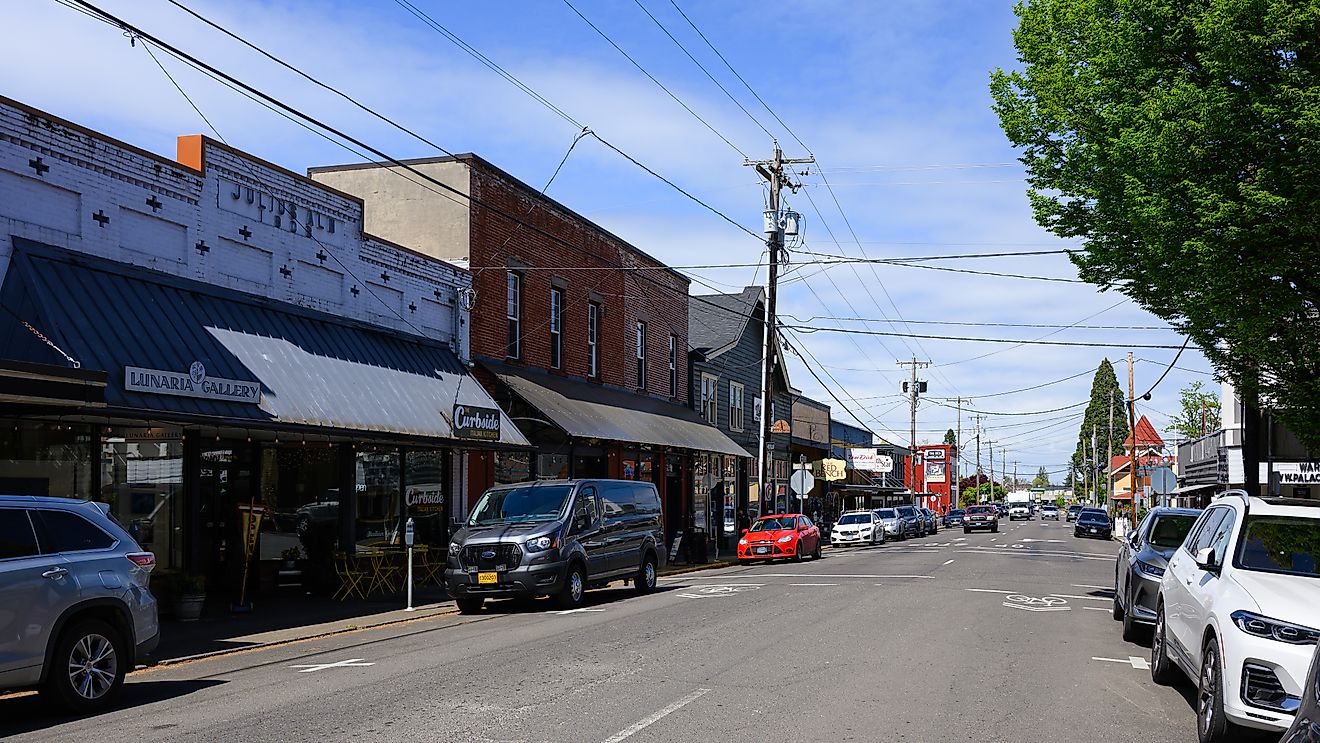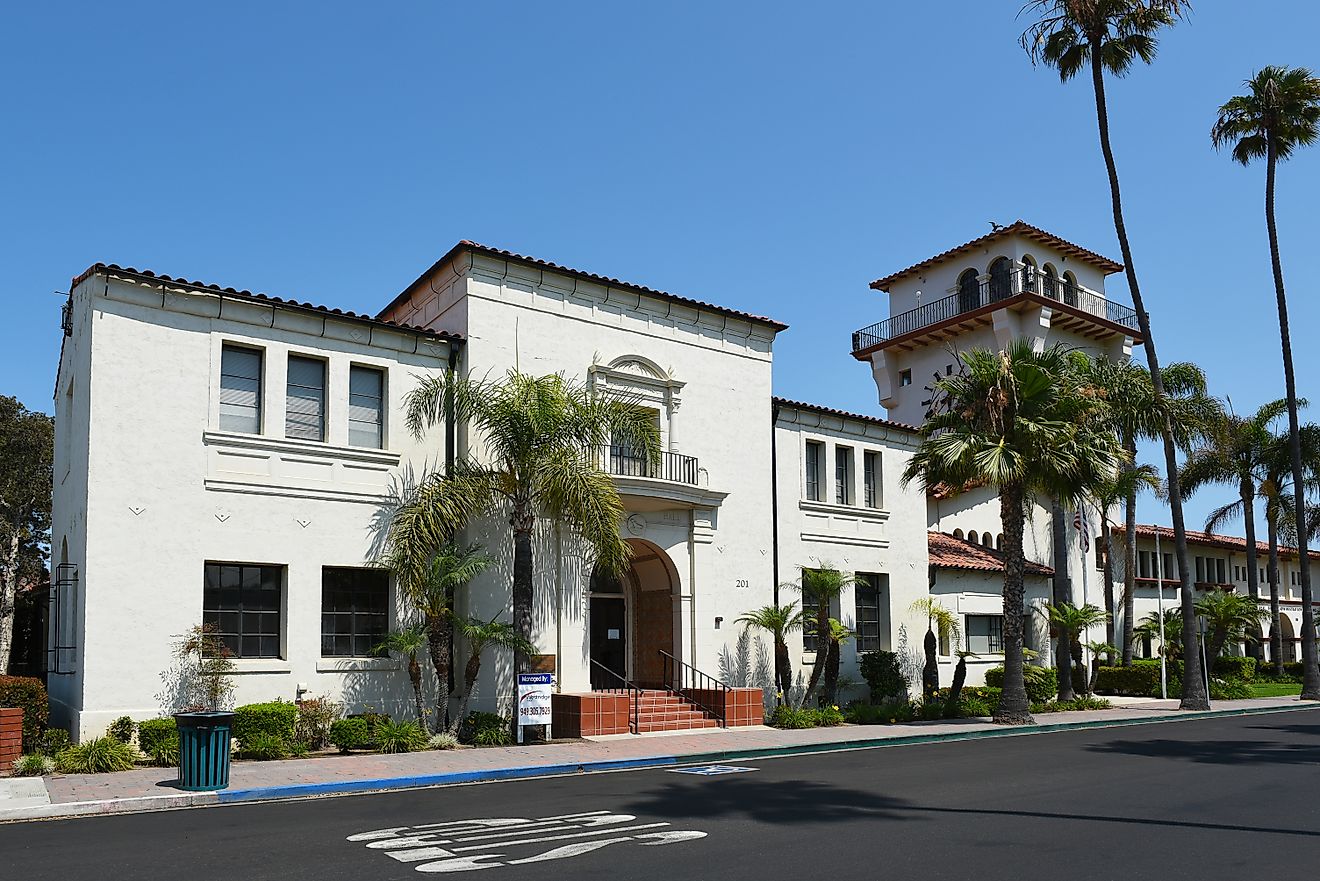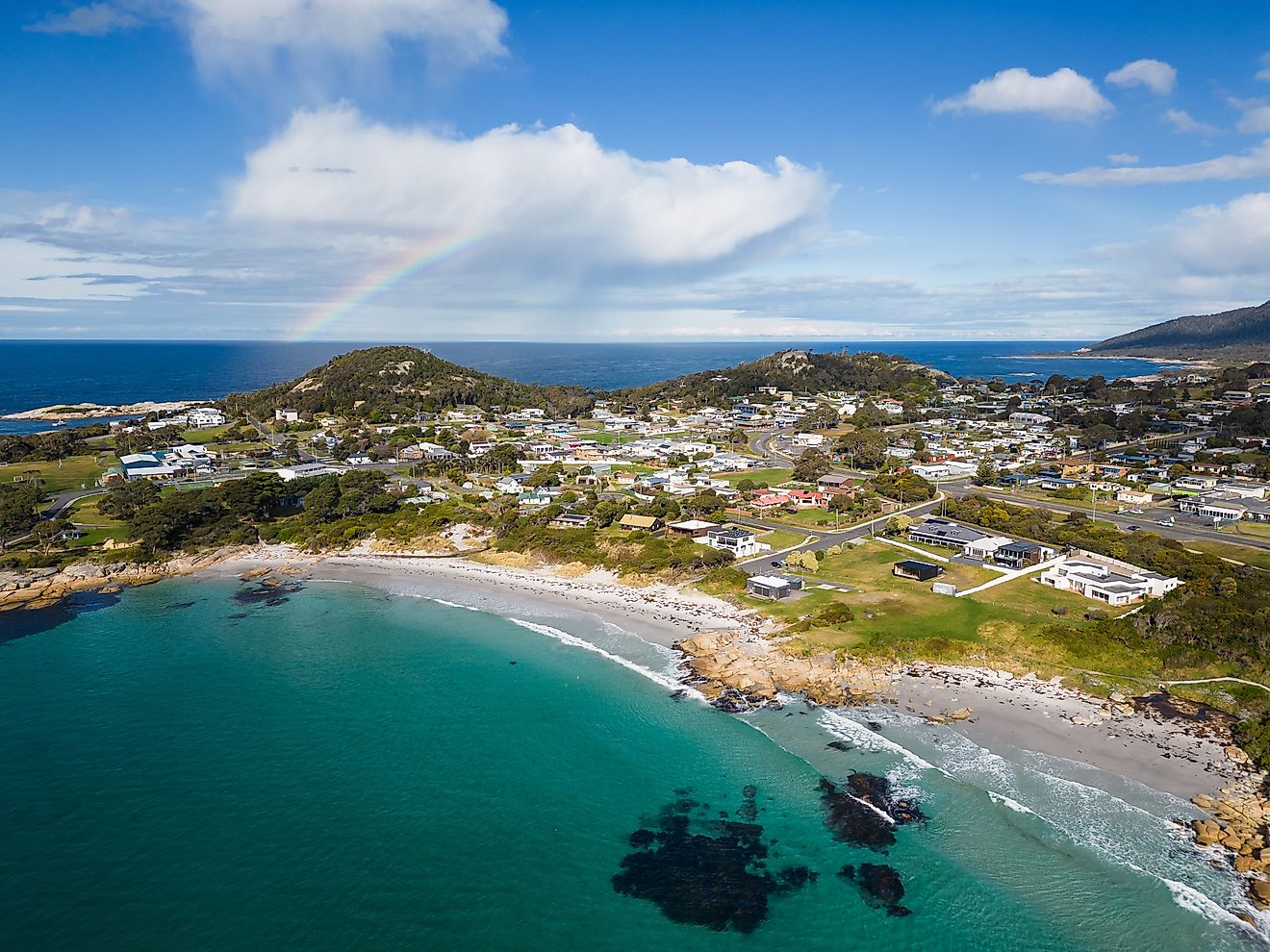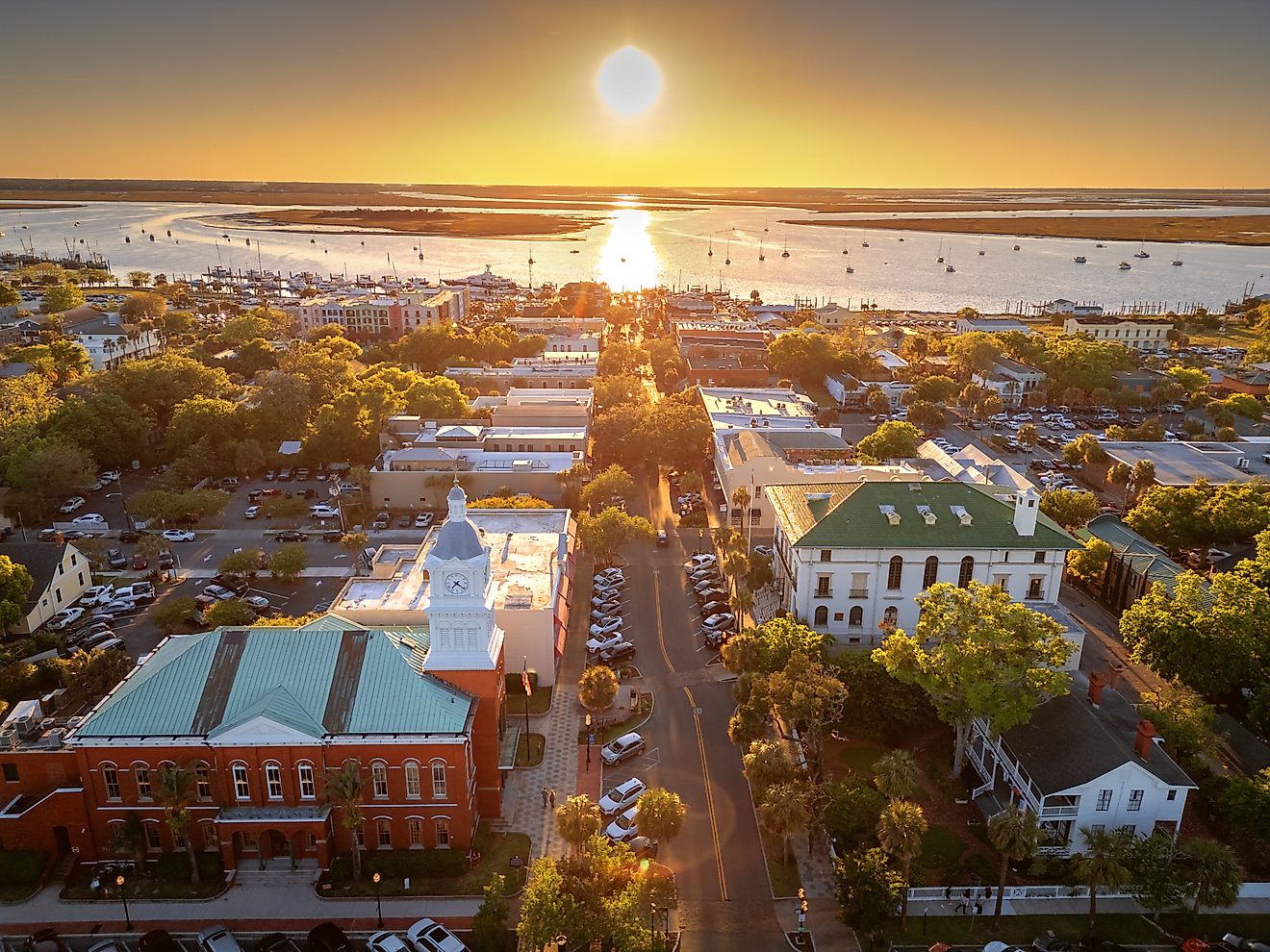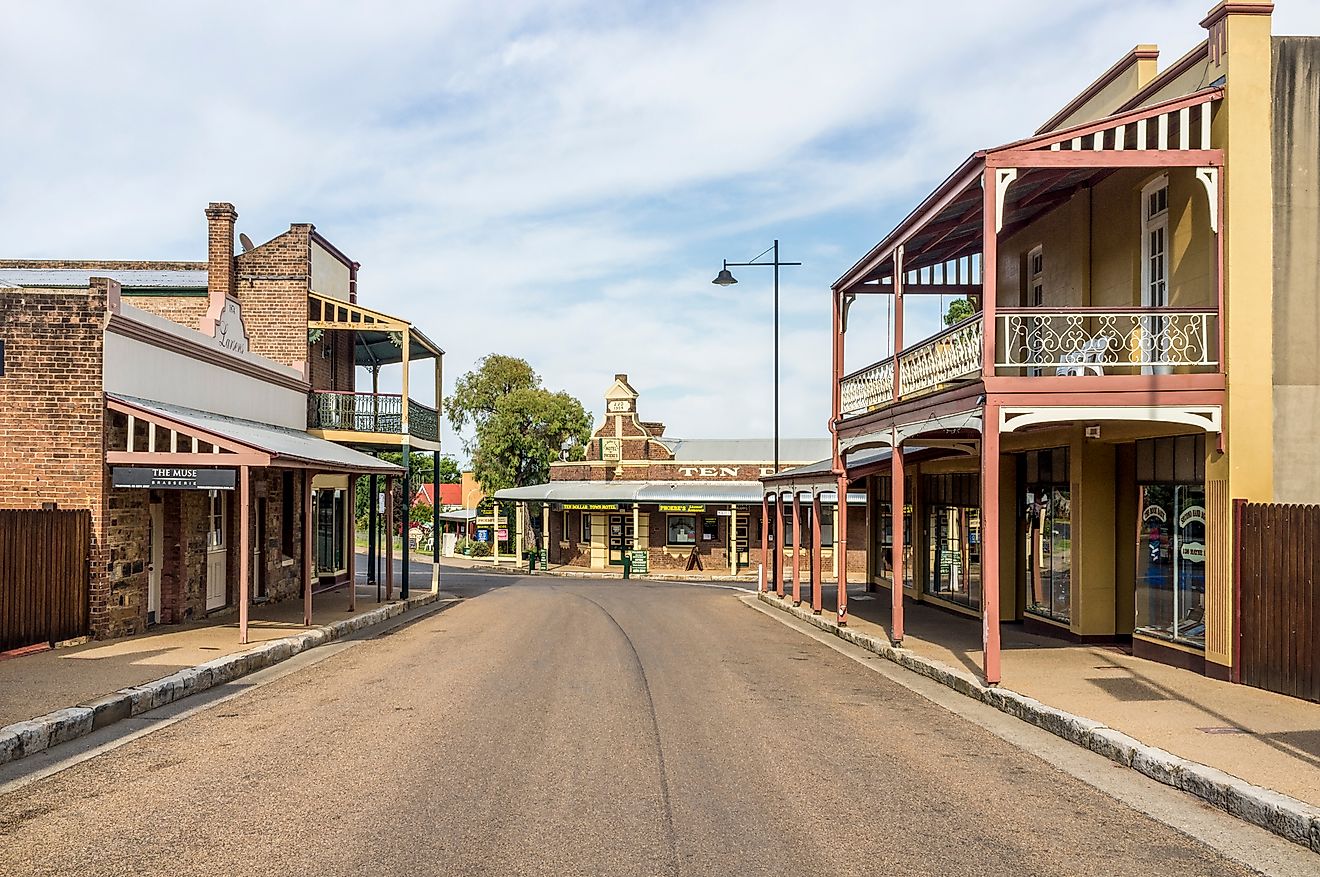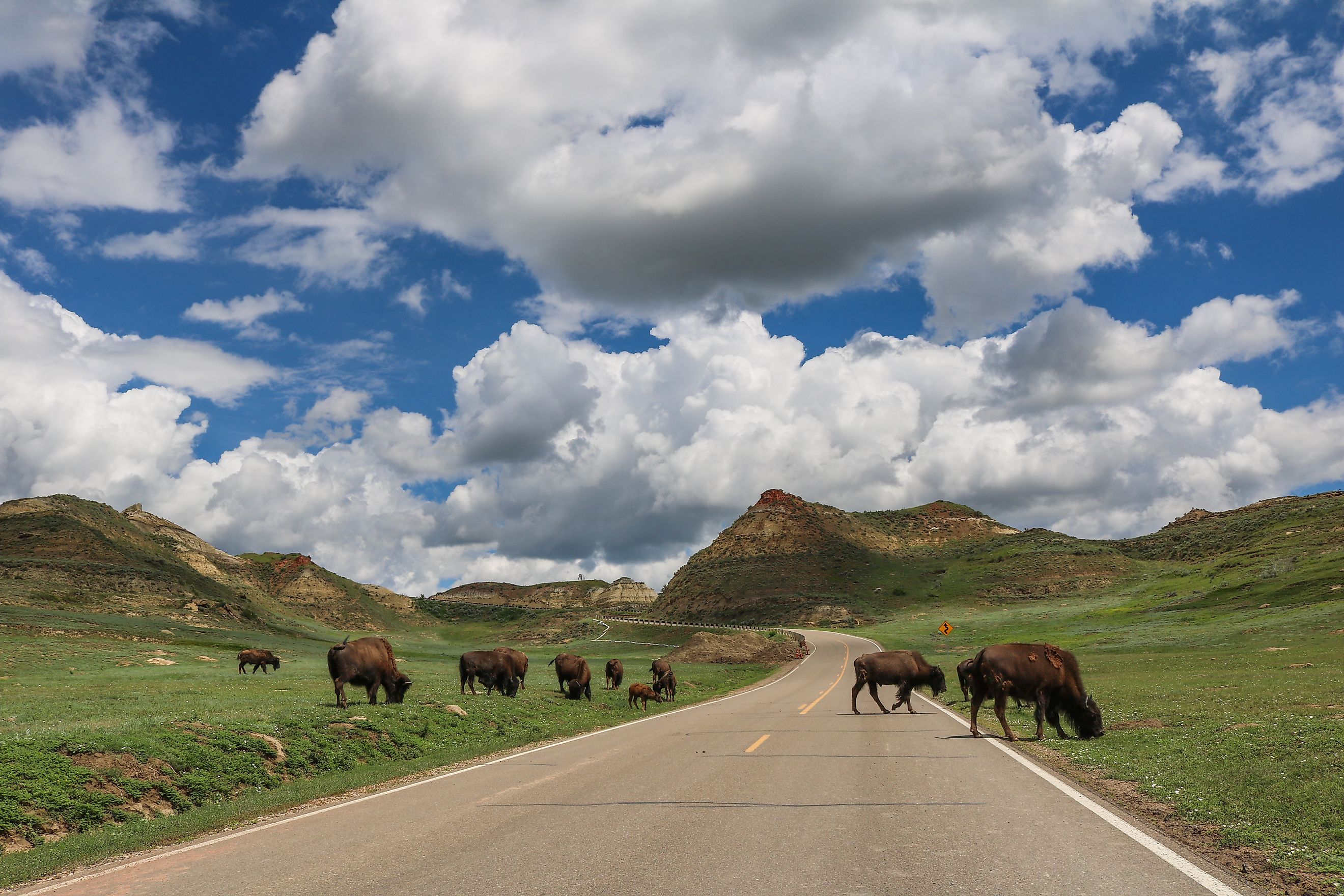
Theodore Roosevelt National Park With Its Wild Bison And Prairie Dogs
North Dakota gets some pretty unfortunate press. It’s one of the first U.S. states people will point to when talking about places where there just isn’t much going on, and for many, it’s the last vacation destination they’d ever consider. But to dismiss North Dakota out of hand is to miss out on one of the most unexpectedly fascinating gems in the National Park system. With some of the most abundant wildlife and unique scenery of the 63 U.S. National Parks, Theodore Roosevelt National Park paints the badlands with wild bison and prairie dogs — and it’s more than enough reason to put this much-maligned state on your bucket list.
A Brief History of Theodore Roosevelt National Park
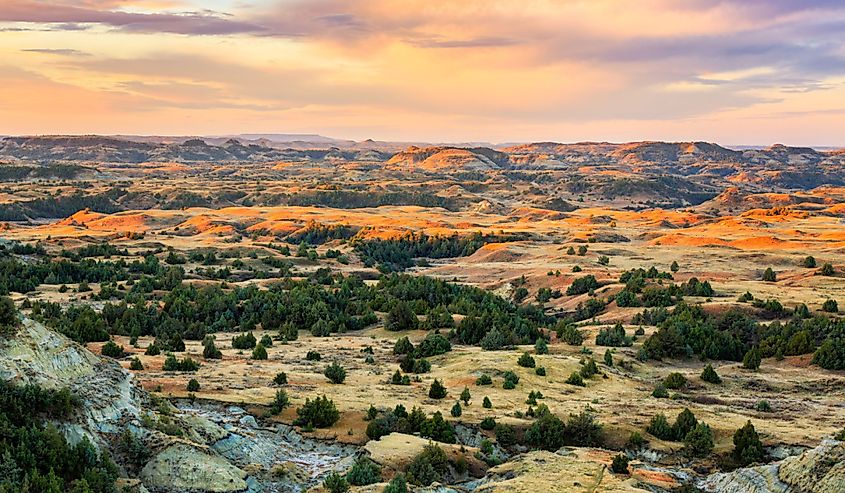
Theodore Roosevelt National Park is the only current National Park named after a person, and there’s a good reason for this. After Roosevelt’s death in 1919, associates decided that the most appropriate memorial to the president who signed the National Park Service into existence would be to set aside a place that had profoundly impacted him as a park under that same system. Since Roosevelt spent formative years in North Dakota’s badlands, living in a cabin that’s now on park grounds, this region was selected.
In 1934, some of the current park area was designated as Roosevelt Regional Park. After being tossed back and forth through the hands of state, local, and federal officials, expanding to include nearby areas deemed worthy of protection, in 1946, the park was redesignated as a National Wildlife Refuge. It attained its current status in 1978.
Although its unique geology and abundant wildlife are the main draws, this park’s human history is equally fascinating. There is very little evidence of its former life as an active ranch left in the Elkhorn Ranch unit of the park; this is one of the locations where Roosevelt worked during his years in North Dakota. Near the park entrance, you’ll also find the Maltese Cross Ranch Cabin, where he lived for several years. Visitors interested in Roosevelt himself, the early conservation movement, and the history of ranching in the Great Plains couldn’t choose a better park to visit.
Park Geography
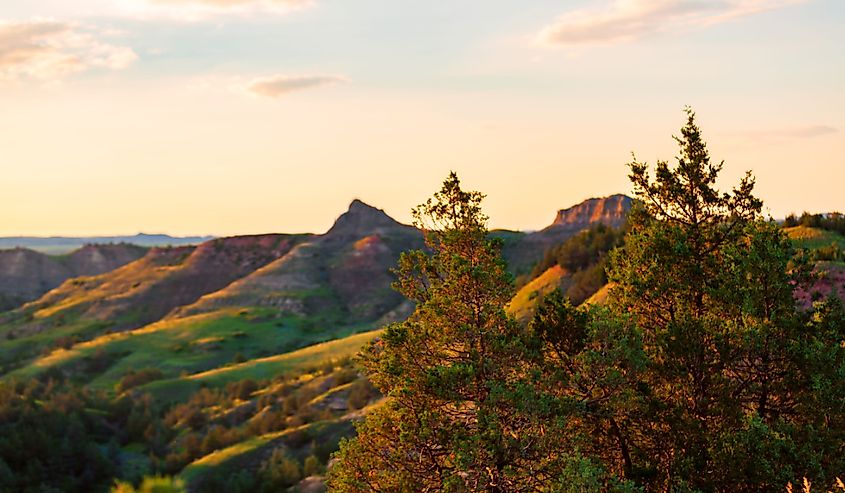
Located in the southwestern corner of North Dakota, Theodore Roosevelt National Park contains three major sections: the South Unit, where you’ll find the famous Wind Canyon and a petrified forest; the Elkhorn Ranch, where Theodore Roosevelt lived during his time in North Dakota; and the North Unit, which features a lot of the park’s badlands.
Broadly defined, a badland is a type of geological feature in which erosion by rivers has resulted in a landscape where deep gullies in the rock create an uneven landscape. These gullies don’t erode evenly, so the grade of their walls and bottoms is extremely variable, and isolated rock formations are often found. Since they occur in semi-arid climates prone to thunderstorms where there is little vegetation to prevent erosion, the states of North Dakota and South Dakota are unusually rich in badlands. This unusual geology is much of what you’ll see in Theodore Roosevelt National Park.
Badlands, Bison, and Prairie Dog Towns
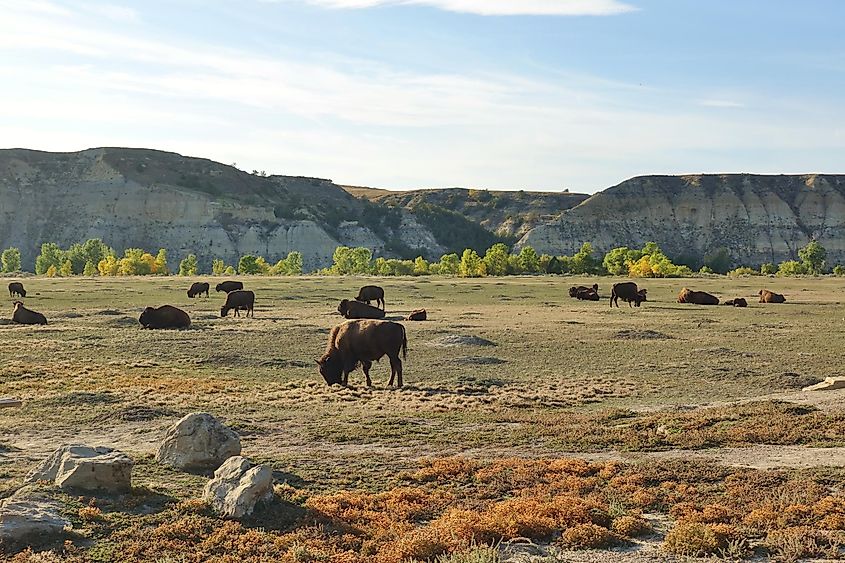
Theodore Roosevelt National Park’s most obvious draw is the uniqueness of its geology and topography. There are very few badlands environments in the U.S., and this one preserves some of the last true wilderness in the Great Plains. This is as close as you can get to the rugged landscape of rolling plains that you’ll read about in historical accounts of this vast region, and it flies in the face of the idea that North Dakota is a flat, featureless state full of nothing but cornfields. Great Plains detractors, take note.
And, of course, you can’t discuss this park without talking about its wildlife. While much of that wildlife will simply wander into your path, it pays to seek out certain park denizens. Prairie dog towns are relatively numerous in this park, but an especially popular one is found just near the park entrance. It’s perhaps the easiest place to observe Theodore Roosevelt National Park’s most charming inhabitants as they go about their busy lives in the network of tunnels they call home.
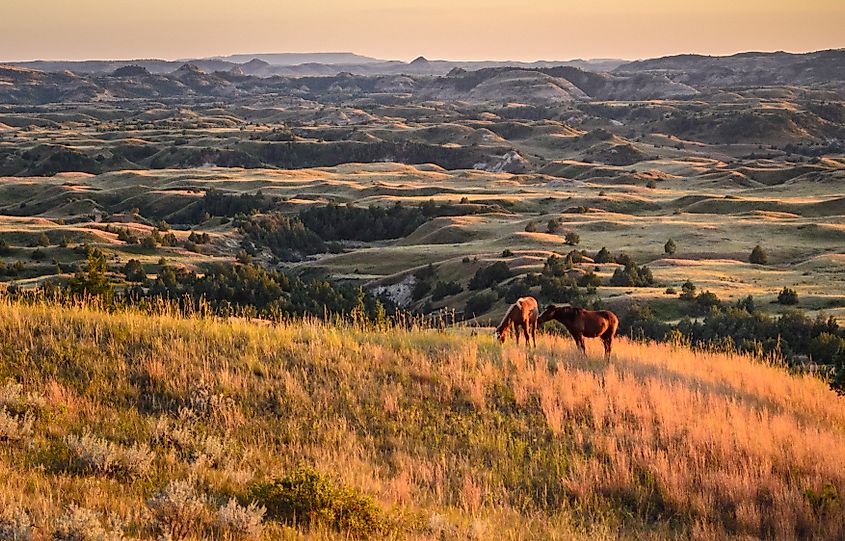
It’s also one of the easiest places you’ll ever find to spot bison, which are just about everywhere. You may also have the chance to spot pronghorn, the now-rare antelope that can reach the fastest land speed of any North American mammal. Elk, porcupines, bighorn sheep, and deer of several varieties — all the iconic species of the American Midwest, largely wiped out in much of the region today- can be seen in this park.
What makes this abundance even more special is the fact that it wasn’t present in the park’s earlier history. Although all of these species are native to the region, most were either very rare or extinct in the area before it became a National Wildlife Refuge in 1946. It’s only thanks to diligent repopulation efforts that Theodore Roosevelt National Park boasts the abundance of native wildlife that it does today.
What to Know Before You Go
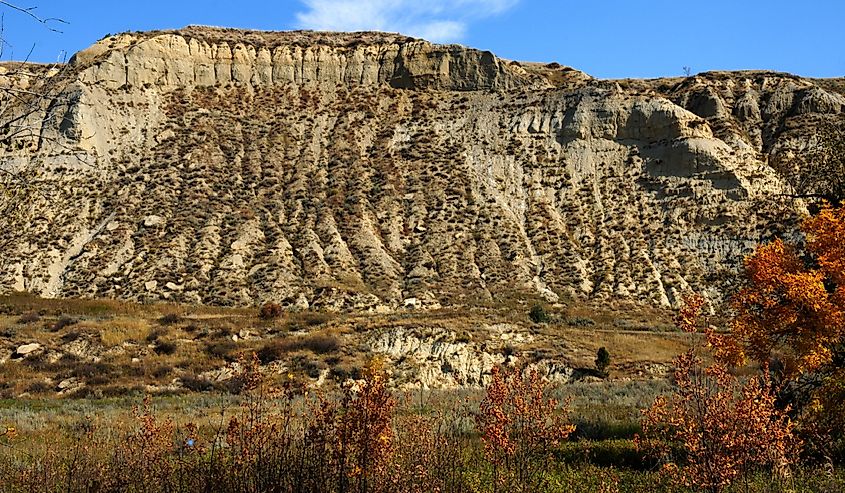
Before you set out to explore Theodore Roosevelt National Park, prepare for a very rustic experience: there are no restaurants or hotels in the park, and the only available accommodations are at campsites. This area can reach extreme temperatures, so prepare for this lack of facilities by filling your gas tank before you enter the park, bringing plenty of water and snacks, and making your lodging arrangements in a nearby gateway town called Medora.
North Dakota’s strongly seasonal climate also affects park operations. The park remains open year-round, but visitors centers close in the winter, as will some portions of the park’s roads, so most prefer to visit outside of the harsh winter months. Time zones are also unusual in this area: the park’s North Unit lies in the Central Standard time zone, and the South Unit lies in the Mountain Standard time zone. Keep this distinction in mind if you plan on moving between units.
Finally, this park is somewhat scattered, and visiting both the North and South Units takes significant driving time. They’re about eighty miles apart by road.
Other Activities in Theodore Roosevelt National Park
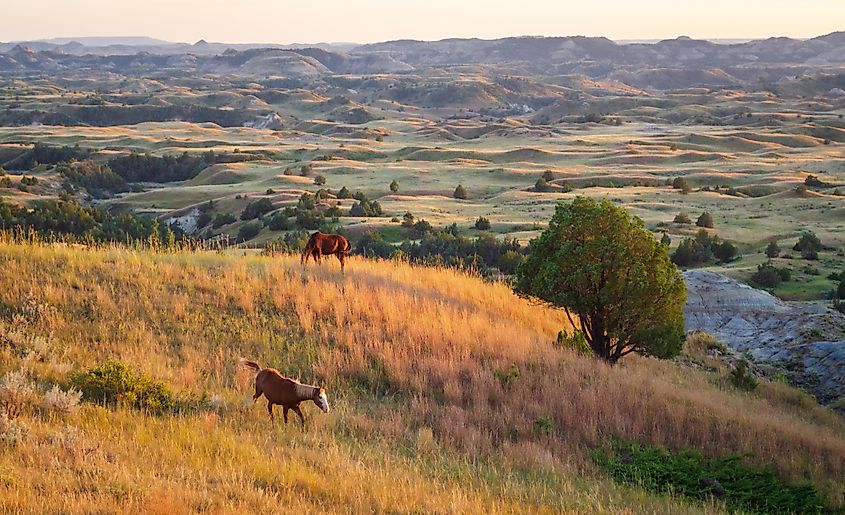
If you’re simply looking to admire the scenery, the South Unit’s Scenic Loop Drive and the North Unit Scenic Byway are some of the best ways to do that with minimal exertion. Both feature ample opportunities to spot wildlife and pullout spots to take photos; you may have to stop to let herds of bison cross the road! You'll also likely see some prairie dogs and get a taste for the park’s scenery.
Hiking is also a very popular park activity for those who prefer more active sightseeing. The .9-mile Painted Canyon Nature Trail is one of the most popular choices: it’s replete with photo-worthy views and suitable for hikers of all ages and skill levels. Suppose you’re the type who won’t be satisfied with something as leisurely as a short loop, the 16-mile Achenbach Trail richly rewards determined hikers with some of the most pristine and unique scenery in the North Unit. For something in between, the Upper Caprock Cullee Trail is a 4.4-mile loop with some excellent vantage points in the North Unit.
Theodore Roosevelt National Park offers three campgrounds, none of which have developed facilities. The Cotton Campground is the only one that requires reservations. Backcountry camping is also possible with a permit. If you’re hoping to camp with your horse, the Roundup Group Campground is the only one that allows horses on-site.

Speaking of horses, you’re free to ride any of the park’s backcountry trails. Just avoid nature trails, campgrounds, and roadways, where horses are disruptive to park operations. In the winter, you can also use cross-country skis and snowshoes to get around. Biking is another option, but avoid off-roading or riding on hiking trails.
It’s no secret that Theodore Roosevelt National Park is one of the least-visited in the system, with only about 650,000 visitors in 2024. But it’s hiding a unique and diverse natural playground where you won’t face the crowds that plague many more popular parks. Whether you want to spot wildlife, trek through the backcountry on horseback, or simply take a scenic drive, there’s something here for you. So maybe you’ve always seen North Dakota as a “flyover state” — but maybe there’s a little more to it than that.
